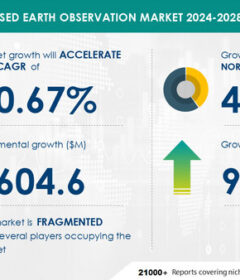How to optimize your Google My Business listing

We all know the immense importance of local search. It’s about dominating the SERPs for search queries which are closely tied to the user’s location, therefore driving customers to your business with a user intent that is very tangible and very immediate.
In terms of local searches, Google will rank your business based on relevance, distance and prominence. Your Google My Business listing plays a vital part in boosting your rankings for local search, as well as cementing your online presence outside of your website.
From our experience, Google My Business listings are definitely not leveraged enough. There is a tendency to set up a listing, verify it and then forget about it. Yet there are so many reasons to ensure you have a fully optimized listing and one that you update regularly. First and foremost, Google My Business profiles are still the most influential factor in local search results.
As if that wasn’t enough, it has never been more important to bolster your presence in the SERPs. SEOs are increasingly facing the woes of the ‘walled garden’, where users are no longer needing to click-through to websites. More often than not, all the information they could possibly need is available in the various features of the SERPs. Although this may be having a detrimental effect on website traffic, it doesn’t mean you can’t leverage the situation. It’s only increased the importance of having a fully optimized GMB profile that will rank highly and generate business.
With a top-notch GMB listing, you can rank highly in local packs, significantly boosting visibility and therefore engagement. It will also help bolster your appearance in Google Maps results, plus you can take advantage of Google reviews. And just in case you need another reason, the service is free. There are not many marketing tools quite as powerful as your Google My Business listing that are also completely free of charge. You’d be mad not to take advantage of this.
Set up and basics
Before we get onto the really juicy stuff, it’s worth covering the basics. Some of these may seem obvious but you would not believe how many times we see the same simple mistakes over and over.
Claim and verify
The first step is to figure out whether or not you already have a GMB listing. This is important because duplicated listings can occur and are just confusing for everyone involved. Even if you don’t recall having created one, a loving customer may have done it for you, or a rogue colleague being far too efficient. Simply do a quick Google search of your business (also try this in Google Maps) and see whether a profile pops up for your business. If so, you’ll need to claim it as your business. If not, you’ll need to create a new one. Once done, you’ll need to verify your ownership – Google will send a friendly postcard to your business address with a code. You’ll then need to enter the code to verify it. It’s all very MI5.
Fill out information
Once verified, don’t just stop there. Fill out all relevant information and ensure it is accurate and kept up to date. There is nothing more frustrating than a GMB listing with the wrong opening times: cue angry customers who could have had an extra hour in bed. Also, remember to add any special hours or holiday times.
Be sure to keep the business name as the business name – don’t go shoehorning any sneaky keywords in or you’ll be at risk of violating Google’s guidelines. Write an accurate and enticing description in line with Google’s guidelines and choose a relevant category. This can be a sticking point for many businesses who feel that none of the categories accurately describe the business. It can be very frustrating. Luckily, there’s a relatively new feature called ‘Services’ where you can add products and services to your business, which will help with the categorization process both from a search engine and user perspective.
Make sure you pay attention to NAP consistency – in other words, that your name, address and phone number, as well as any other information, are all consistent throughout the web. Check other directories and also your own website. It’s a simple concept but mistakes are surprisingly common and it can make a big difference to your local rankings.
Photos
Again, an often overlooked aspect of your GMB listing and one that can make a very noticeable difference to click-through rates. People are visual beings and some snazzy photos will help build an overall positive image of your business. Include a logo, a shot of your premises if applicable and any other photos which you think will help to effectively promote your business. Ensure they are professional, appealing and kept up to date. Think about what might help push a customer to a buying decision.
Be sure to follow Google’s best practices in terms of formatting; the recommended specifications are as follows:
- Format: JPG or PNG
- Size: Between 10 KB and 5 MB
- Minimum resolution: 720 px tall, 720 px wide
- Quality: The photo should be in focus and well lit, and have no significant alterations or excessive use of filters. In other words, the image should represent reality.
You’ll see throughout your Dashboard that Google makes a point of reminding you about photos: “Businesses with recent photos typically receive more clicks to their websites.” They couldn’t make it much clearer than that – if Google says it, then do it.
As of January 2018, you can now add videos to a listing. It’s not something we’ve seen many businesses take advantage of, yet we all know how popular video content is. Any videos you add will appear within the photos section. Just be sure to follow Google’s video guidelines.
Reviews
Google reviews have been around for a long time and it’s no secret how influential they are. In fact, positive reviews make 68% of consumers trust a local business more. Don’t just sit back and wait for the reviews to pour in. Even if you’ve got the most earth-shatteringly awesome business, people still need a gentle nudge towards the review section. Actively encourage reviews because if you don’t ask, you don’t get.
Raking in those positive reviews isn’t enough. It’s also good practice to respond to reviews, especially negative ones. Even if a review seems unfounded or overly rude, be sure to keep your cool and respond in a calm and collected manner.
Google Posts
A heavily underused feature of Google My Business profiles is the Google Posts section and it works in a similar way to posting on social media. Posts are displayed as mini updates in a carousel as part of your knowledge panel, although they expire after seven days. As with a standard social media post, you can add media, some copy and a link to a website. It’s always a good idea to include an image but be careful of them being cropped within Google Maps. It’s therefore worth checking how the image formats on both desktop and mobile.
You can use Google Posts for a range of different functions, but it may be helpful to use the four official post types as a guide: What’s New, Events, Offers, Products. The ‘What’s New’ post type could be populated with exciting announcements, general updates and your latest articles. Don’t forget to add a CTA to your posts to encourage engagement and conversions.
Google posts are very prominent in Google Search so if you’ve got something important to say, then say it!
Monitor
Did you know that anyone can suggest an edit to your profile? That includes your worst enemy trying to sabotage your business. It’s therefore essential that you keep an eye on your profile and monitor any suggested changes, even if you don’t have any enemies. It could be a well-meaning customer who just doesn’t have a clue. Or it could be an internet troll. Either way, business owners are not always notified.
Users can also answer questions about your business, which may be a scary prospect for some. Google likes user-generated content as it’s all part of building a user-centric community. Just make sure that you’re keeping a wary eye out.
Insights
This is one of the most important sections of your GMB listing. It’s all very well having an all singing and all dancing listing, but the fun starts when you see how many conversions it’s generating. It’s pretty standard practice to track all key events and conversions on a website itself, but the conversions generated by the GMB listing are so frequently overlooked. Yet your GMB listing is often the first port of call for customers looking for a phone number to get in touch.
And you know the best bit about Insights? You can even find out whether customers found you via a direct brand search or via a ‘discovery’ search. This information is vital in terms of reporting, as it allows you to see how successful your SEO work has been in terms of propelling your GMB profile to the top of that local pack for key search terms.
Find out handy information like whether your GMB profile was viewed on Search or Maps, as well as customer actions, such as website visits, direction requests and phone calls. You can also see how successful your photos have been in comparison to other businesses like yours. These comparison graphs are great for pitting yourself against competitors to see where you may be falling behind on the optimization front. It also enables you to do a bit of testing with which photos work best for views and click-throughs. The Insights section is a treasure trove of information, so pay lots of attention to it.
Optimizing your Google My Business listing is not rocket science. It’s very straightforward and simple changes can have a profoundly positive effect on your SEO. Given it’s an area so often overlooked by other businesses, there really is a whole wealth of ranking opportunity up for grabs.


